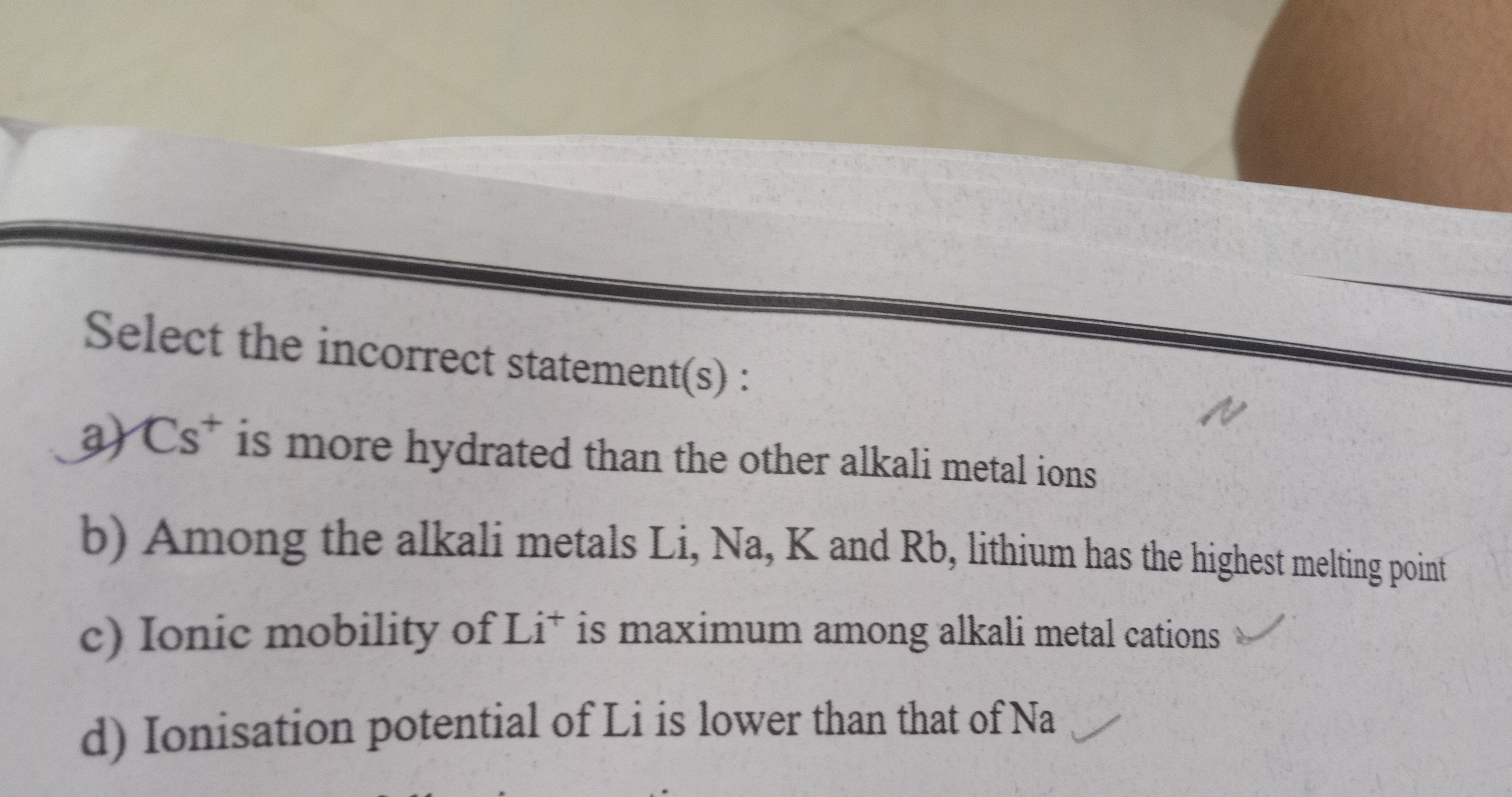Question
Question: Select the incorrect statement(s):...
Select the incorrect statement(s):

A
Cs+ is more hydrated than the other alkali metal ions
B
Among the alkali metals Li, Na, K and Rb, lithium has the highest melting point
C
Ionic mobility of Li+ is maximum among alkali metal cations
D
Ionisation potential of Li is lower than that of Na
Answer
a, c, and d
Explanation
Solution
- a) Incorrect: Hydration of an ion is directly proportional to its charge density (charge/size). Alkali metal ions have a +1 charge. Ionic size increases down the group (Li+ < Na+ < K+ < Rb+ < Cs+). Thus, charge density decreases down the group (Li+ > Na+ > K+ > Rb+ > Cs+). Li+ has the highest charge density and is therefore the most hydrated ion, while Cs+ is the least hydrated.
- b) Correct: The melting points of alkali metals generally decrease down the group. This is because the metallic bond strength decreases with increasing atomic size. Lithium, being the smallest alkali metal, has the strongest metallic bond and consequently the highest melting point among them.
- c) Incorrect: Ionic mobility in aqueous solution is inversely proportional to the size of the hydrated ion. Since Li+ is the most hydrated ion (due to its small size and high charge density, it attracts more water molecules forming a larger hydrated sphere), it has the largest hydrated ionic radius. Consequently, Li+ has the minimum ionic mobility among alkali metal cations, while Cs+ has the maximum mobility.
- d) Incorrect: Ionization potential (first ionization enthalpy) decreases down the group as the atomic size increases and the outermost electron is further from the nucleus and shielded more effectively. Lithium (Li) is smaller than Sodium (Na), and its valence electron experiences a greater effective nuclear charge, requiring more energy to remove. Therefore, the ionization potential of Li is higher than that of Na.
